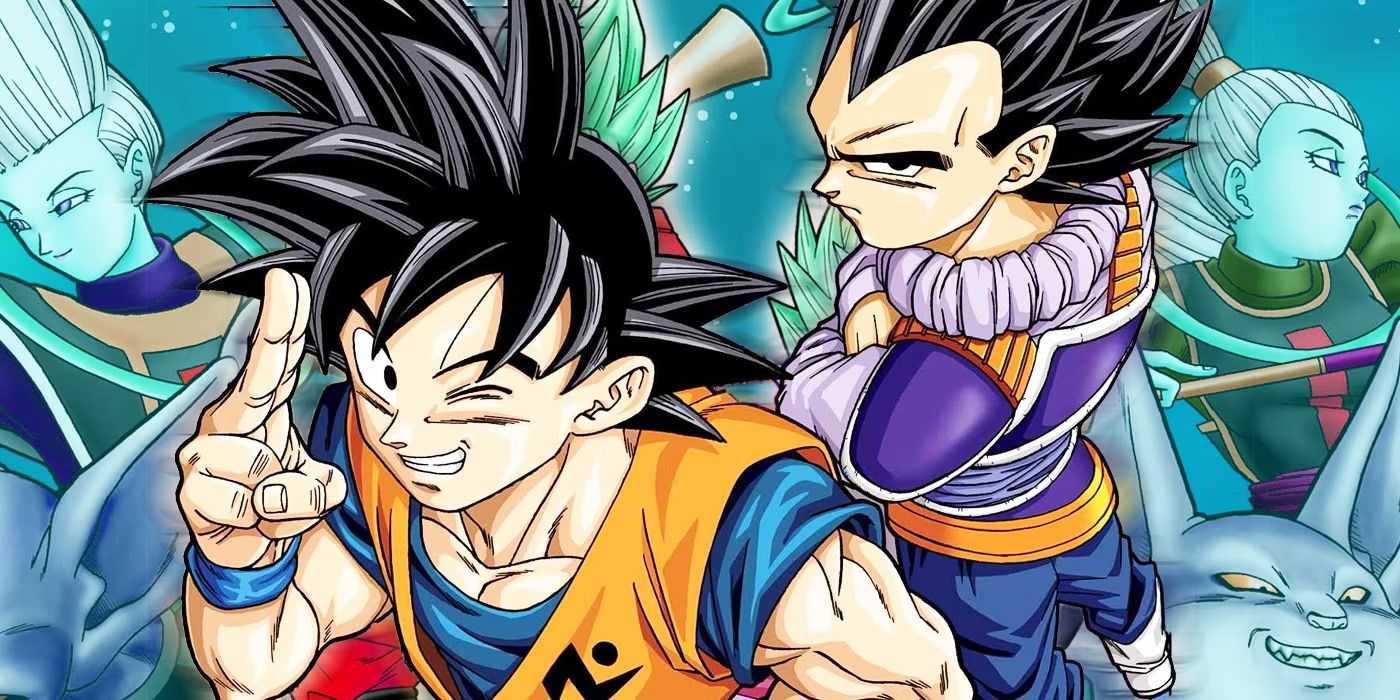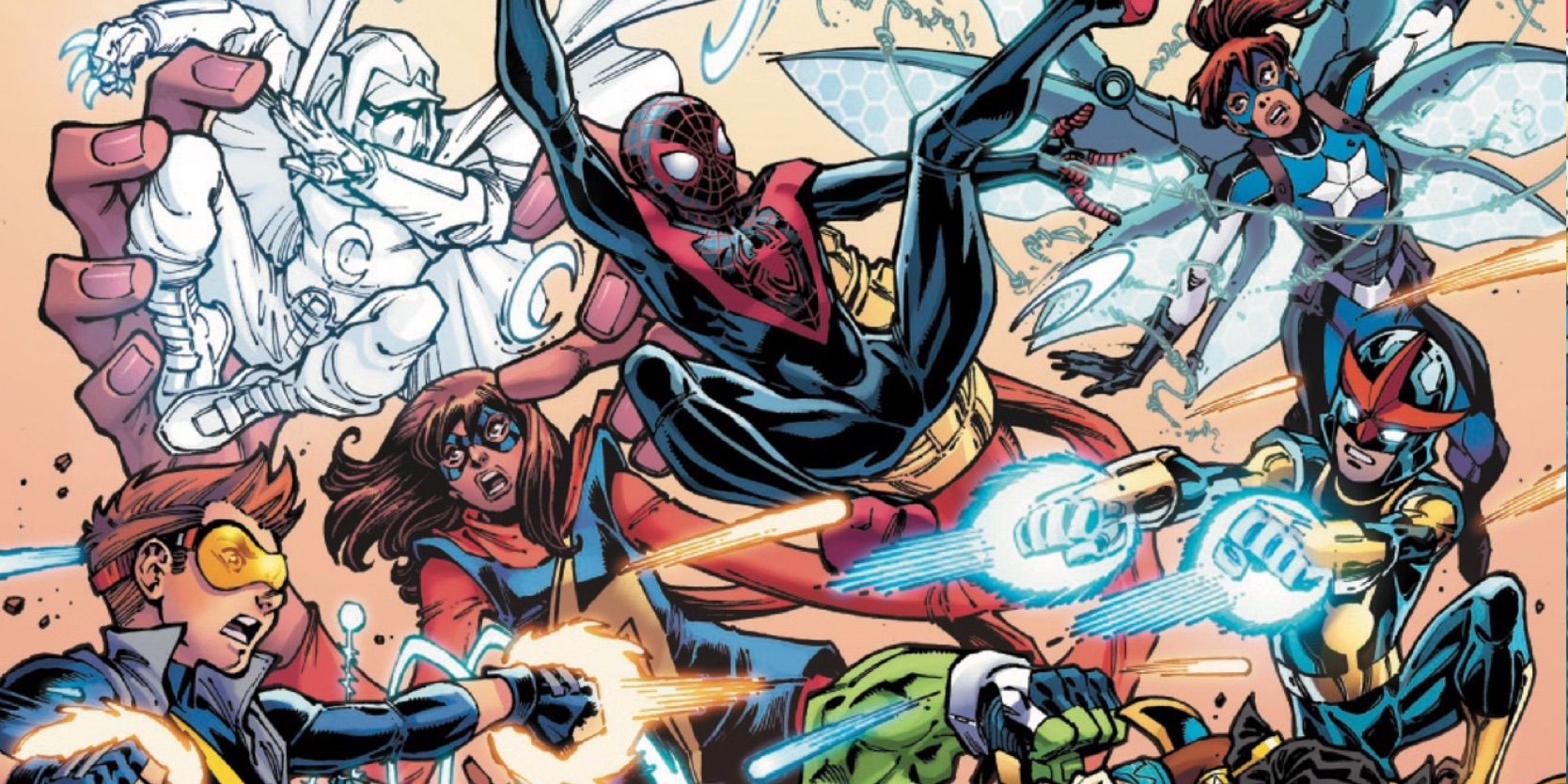Dragon Ball's Impact on Latin America Goes Well Beyond Anime Culture
Summary Dragon Ball's impact in Latin America goes beyond anime culture, reaching into every corner with beloved characters like Goku and Super Saiyan.
Branching out from the manga and anime, Dragon Ball exploded into various media, including video games and merchandise that captivated global fans.
Dragon Ball not only entertained but became a beacon of hope in Latin America, symbolizing strength, family values, and courage within the community.
Dragon Ball’s impact on the entertainment industry is well-known, but its significance in Latin America goes far beyond anime culture. The world-renowned franchise began when Akira Toriyama’s manga, Dragon Ball, was first serialized in Weekly Shonen Jump magazine in 1984. Two years later, an anime adaptation from Toei Animation was aired from 1986-1989. Since then, Toriyama’s story has reached every corner of the globe. Anime fan or not, most have heard the name Goku and the term “Super Saiyan” at one point or another, further exemplifying the impact of this sensational franchise.
Following the manga’s serialization and the anime’s airing, Dragon Ball exploded in popularity, branching out into various media. Anime like Dragon Ball Z and Dragon Ball Super emerged, while video games and merchandise followed suit. Nintendo, Sega, Xbox, and PlayStation all have a plethora of games released, including Dragon Ball Z: The Legend and Dragon Ball: The Breakers.
Close
The multitude of media is treasured by fans worldwide. Akira Toriyama inspired a multi-generational, global audience with his masterpiece. However, while fans of varying demographics have fallen in love with the franchise, its influence in Latin America goes much deeper than fans realize.
Related Akira Toriyama's Legacy Shaped Our World Beyond Dragon Ball The passing of Akira Toriyama encourages us to reflect on the legacy of his work in shaping the popular culture of the contemporary world.
Akira Toriyama’s Legendary Career
Since 1986, Dragon Ball has served as the symbol of the anime community.
Akira Toriyama was born in Nagoya, Japan, in 1955. Although he considered himself a social outcast, he would go on to create one of the most recognizable franchises in history.
"Dragon Ball is like a miracle, given how it helped someone like me who has a twisted, difficult personality do a decent job and get accepted by society.” – Akira Toriyama
Toriyama studied art at a technical high school, where he focused on creative design. Afterward, much to his parents' dismay, he opted not to pursue a college education. Following his educational experience, Toriyama worked at an advertising agency nearby but quickly burned out. Three years later, he created his first comic, Dr. Slump. His first series followed the story of Arale Norimaki, a robot with superpowers.
Dr. Slump became a success, selling over 35 million copies in Japan. However, Toriyama’s brilliance was truly captured in his next project. Dragon Ball was inspired by Jackie Chan, the martial arts superstar, and a Chinese novel published in the 16th century during the Ming Dynasty, Journey to the West. The book is based on the true story of a Buddhist monk, Xuanzang, who traveled to the Western Regions in search of the Buddhist Sūtras (or sacred texts). Similarly, Dragon Ball’s protagonist, Son Gokû, embarks on a quest to obtain the Dragon Balls, a set of magical crystals. It was this story that launched Toriyama’s career to unimaginable heights.
Gone Too Soon: Toriyama’s Sudden Passing Hit The Industry Like A Shockwave
2024 marked the end of an era as Akira Toriyama’s journey came to a close.
In early 2024, tragedy befell anime fans all over the globe. On March 1st, Akira Toriyama passed away at the age of 68 from an acute subdural hematoma, a fatal brain condition. About a week later, on March 8, a shared statement from Bird Studio and Capsule Corporation Tokyo was released on the official Dragon Ball website, announcing the manga artist's unexpected passing. In addition, it mentioned Toriyama’s undying love for his craft:
“It’s our deep regret that he still had several works in the middle of creation with great enthusiasm. He would have many more things to achieve. However, he has left many manga titles and works of art to this world.” – Bird Studio & Capsule Corporation Tokyo
Anime fans around the world mourned the loss of the iconic creator. Dragon Ball’s impact is wide-reaching, inspiring a multitude of anime. Monkey D. Luffy from One Piece and Naruto from Naruto were both inspired by the series lead, Gokû. Furthermore, several anime contain references to the timeless series, including the 1997 remake of Dr. Slump, in which two main characters are seen playing a Dragon Ball Z video game. However, while Akira Toriyama’s passing devastated Dragon Ball fans worldwide, a social media rumor sparked a discussion circling the anime’s significant impact on Latino culture.
Why Anime in Latin America is Almost Completely Different From the U.S.
Anime has become a worldwide phenomenon, but it all started in Latin America.
Dragon Ball has had a significant influence on Latin American culture for decades, but anime as a whole is very different from anime in North America. Dragon Ball Z was first broadcast in Mexico as a low-cost solution for TV channels to cater to younger audiences. There were a small number of animation studios, with an even smaller budget. Similar to telenovelas, production companies did not believe that media for women and children was worth investing copious amounts of money in. Thus, out-sourced animations were a fantastic, cost-friendly solution to animated shows in Latin American regions.
In addition to serving as a cost-effective solution, anime in Latin America were often treated much differently than anime in North America. For example, anime such as Knights of the Zodiac were dubbed over twice, received significant cuts to censor violence, and were limited to only 32 episodes in the U.S.. On the other hand, the same show in Latin America, re-titled Saint Seiya: Caballeros Del Zodiaco, was not overly edited and received 4 OVAs and feature films. While the United States was hesitant against longer-running shows with more mature scenes, telenovelas were a staple in many kids' childhoods in Latin America, which is why anime was easily embraced.
Telenovelas, which are often sourced from Mexico, Argentina, and Brazil, frequently feature adult themes common in anime like violence, drugs, or sexual content. Furthermore, they are known for their melodramatic tones and multi-season arcs, similar to anime. One of the primary reasons for these differences was the purpose of the show itself. In America, short arcs and TV shows were created for one primary purpose: to sell products. The toy market in America was the top priority, but in Latin America, it was entertainment. The goal was to cater to “secondary markets” (women and children). After rejections from the U.S. market, Japan made several licensing deals with Latin America.
It wasn’t until anime became extremely popular in Latin America that the U.S. finally caught on. However, even after deciding to begin broadcasting anime, some of the shows were edited and censored beyond recognition. Latin America opted to leave the shows as they were, preserving Japanese cultural influences in the anime.
Dragon Ball Z was one of the first anime imported into Latin America. However, the magnitude of its success was unprecedented. Slowly but surely, Dragon Ball characters began to appear in the public eye in various ways. Recognizable characters from the anime are often seen in street parades in Colombia, football jerseys in Argentina, and restaurants in Mexico.
Dragon Ball is More Than Just an Anime in Latin America, It’s a Beacon of Hope
A social media rumor regarding a Cartel cease-fire in Mexico highlights anime’s significant impact on Latino culture.
Following Akira Toriyama’s death, YouTuber Justin Whang posted a joke on X regarding a cartel ceasefire in Mexico. This post soon went viral, and rumors spread surrounding its authenticity. Multiple social media platforms, including Instagram and TikTok, began discussing the ceasefire, believing it to be true. While it was soon revealed that the post lacked veracity, the joke prompted a conversation about Dragon Ball’s impact on Latin American culture.
In 2018, a scandal arose surrounding a Dragon Ball Super screening in Juárez. Several public viewings of Episode 130 of DBS appeared throughout Latin America. The episode featured a monumental battle between Gokû and his enemy, Jiren. However, a day before the event, Toei Animation sent a Mexican governor a letter via the Japanese Embassy, denying permission for the episode to be shown because of pirating concerns. Mayor Cabada pled his case at a news conference, appealing to Toei Animation, stating that this was not only a tribute to the fandom, but an attempt to reach troubled youth.
Goku, the anime’s lead character, has become an icon for anime worldwide, but he is a symbol of strength, family values, and courage in Latin America.
During the drug cartel war in 2010, the city’s annual Mexican Independence Day was canceled due to safety concerns. As a result, Mayor Cabada wanted to use the gathering to bring the city together, "It's simply a way for the municipality to support youth. Let's say it: There are not a lot of programs to help our boys.” Finally, after negotiations, Toei Animation agreed to the public showing, which ended up attracting crowds of over 15,000 people.
How Dragon Ball Aligns with Latino Culture
Dragon Ball is treasured by a multitude of audiences, but its underlying themes best represent the Latino community.
Dragon Ball is considered the quintessential anime in Latin America because it also aligns with the culture. Goku, the anime’s lead character, has become an icon for anime worldwide, but he is a symbol of strength, family values, and courage in Latin America. Dragon Ball is known for its epic battle sequences, power moves, and expansive lore. However, the reason for its devoted fan base goes much deeper. Goku is a powerful figure who cares for his family and is profoundly passionate about achieving his goals.
Goku became a household name in Latin America thanks to his defining character traits and the series’ most relatable arcs. Dragon Ball contains many sub-plots about protecting others, fighting for family, and achieving personal goals. However, while the family values of Dragon Ball make the series enjoyable for a multi-generational audience, its action element takes its marketability to the next level. For example, in Dragon Ball, the Red Ribbon Arc follows Goku as he rebels against an oppressive government, something many South American communities can relate to.
2:02 Related One of Dragon Ball’s Best Quotes of All Time Proves Why the Series Holds Up 40 Years Later Dragon Ball is one of the most iconic series of all time and one quote in particular represents why is still relevant to fans even after 40 years.
These qualities and more make Goku so beloved among the Latino community. Furthermore, Dragon Ball is distinct from other outsourced entertainment; it neglects Latino stereotypes while simultaneously appealing to an underrepresented community. Unlike the United States, the Latin American government decided not to overly censor Japanese media, preserving clear cultural influences. As a result, the Latino community also found that they related to the values represented in the media. Dragon Ball Z, among other anime, was once considered children's entertainment, but it soon became a symbol of Latino television.
Dragon Ball has not only infiltrated the media in Latin America but the restaurant market as well. Multiple Reddit posts began circling in 2012 about Taqueria Goku, a Dragon Ball-themed restaurant in Mexico. The taco shop started as a small business, but after photos of its iconic mural depicting Goku cutting al pastor went viral, fans of Dragon Ball began flocking to the restaurant. An artist on Reddit helped put the anime-themed eatery on the map with artwork depicting characters from Neon Genesis Evangelion eating at Taqueria Goku. Soon after the restaurant gained popularity on social media, the owners changed its name to Tacos Goku.
Dragon Ball has had a significant influence on Latin American culture for decades. The anime was first broadcast in Mexico as a low-cost solution for TV channels to cater to younger audiences. However, the magnitude of its success was unprecedented. Slowly but surely, Dragon Ball characters began to appear in the public eye in various ways. Recognizable characters from the anime are often seen in street parades in Colombia and football jerseys in Argentina.
What started as a budget decision for children’s entertainment became a cultural icon. Dragon Ball has left its mark on the world through internet memes, themed restaurants, and upholding family values while entertaining a generation. The anime community mourned the loss of Toriyama, whose fable set the stage for future generations of anime. However, the anime has not only entertained a multi-generational audience but also symbolizes a pillar of identity, hope, and coexistence to Latin American communities, which is why their adoration of the Dragon Ball franchise goes much deeper than anime culture.











COMMENTS